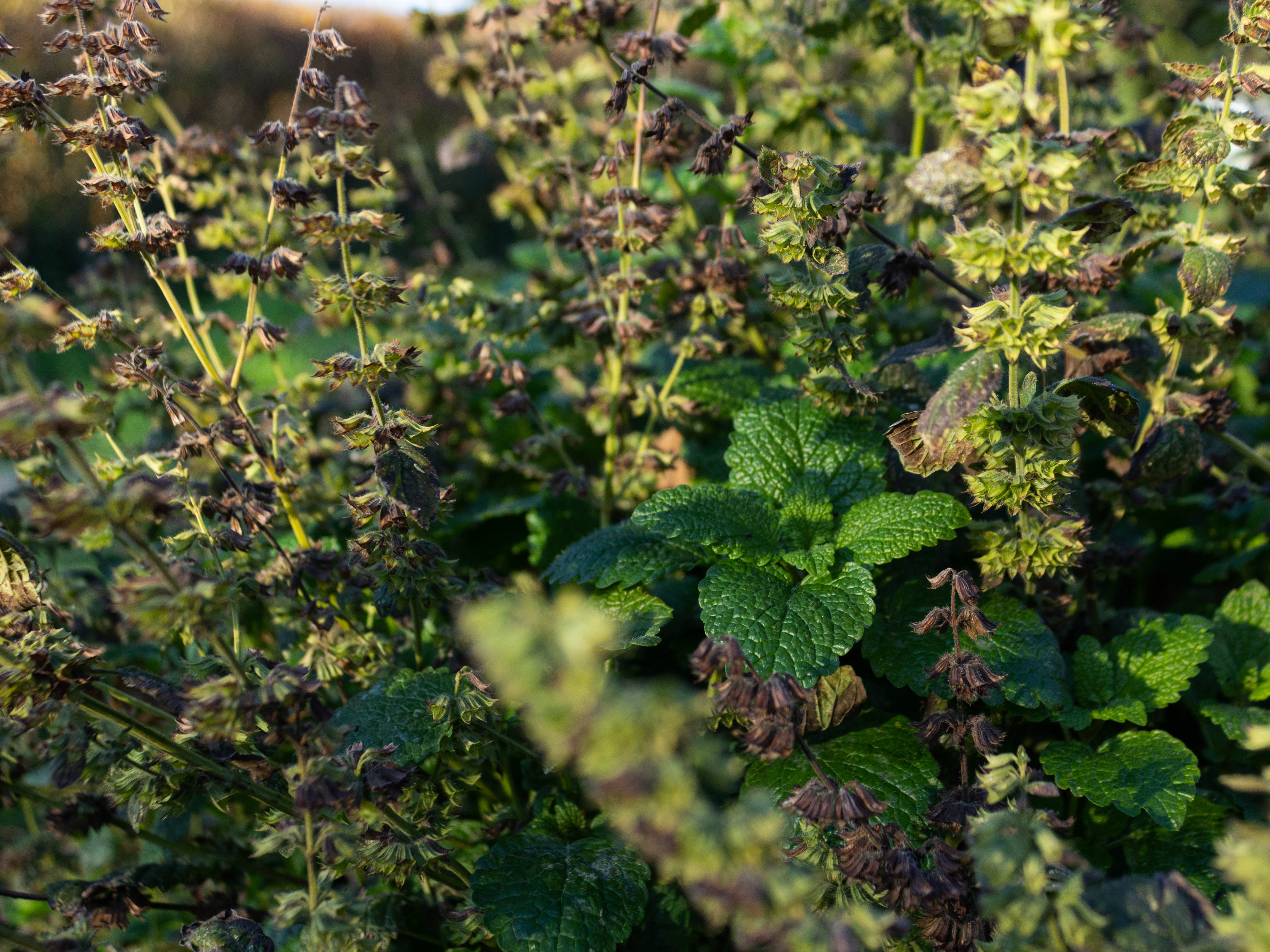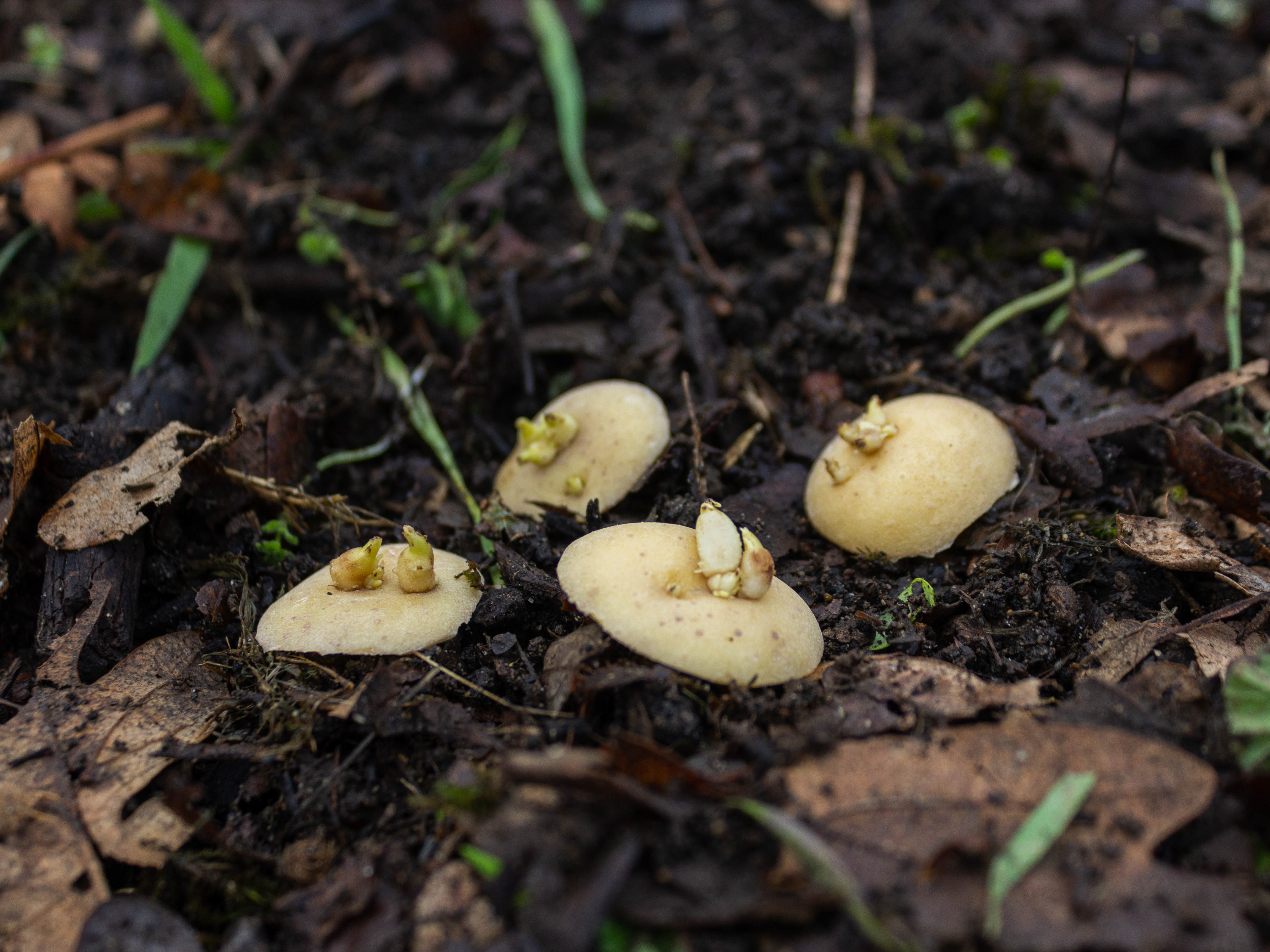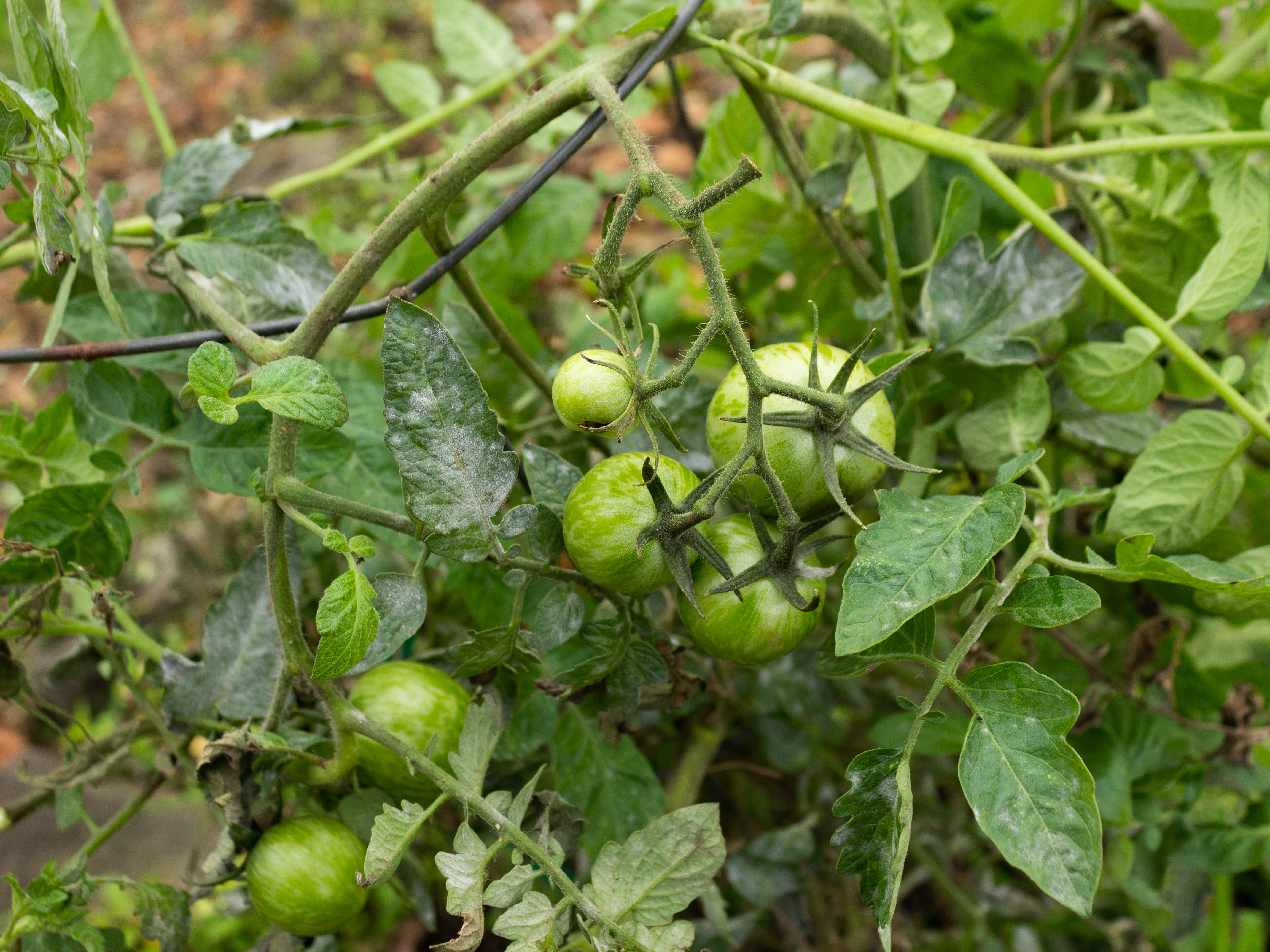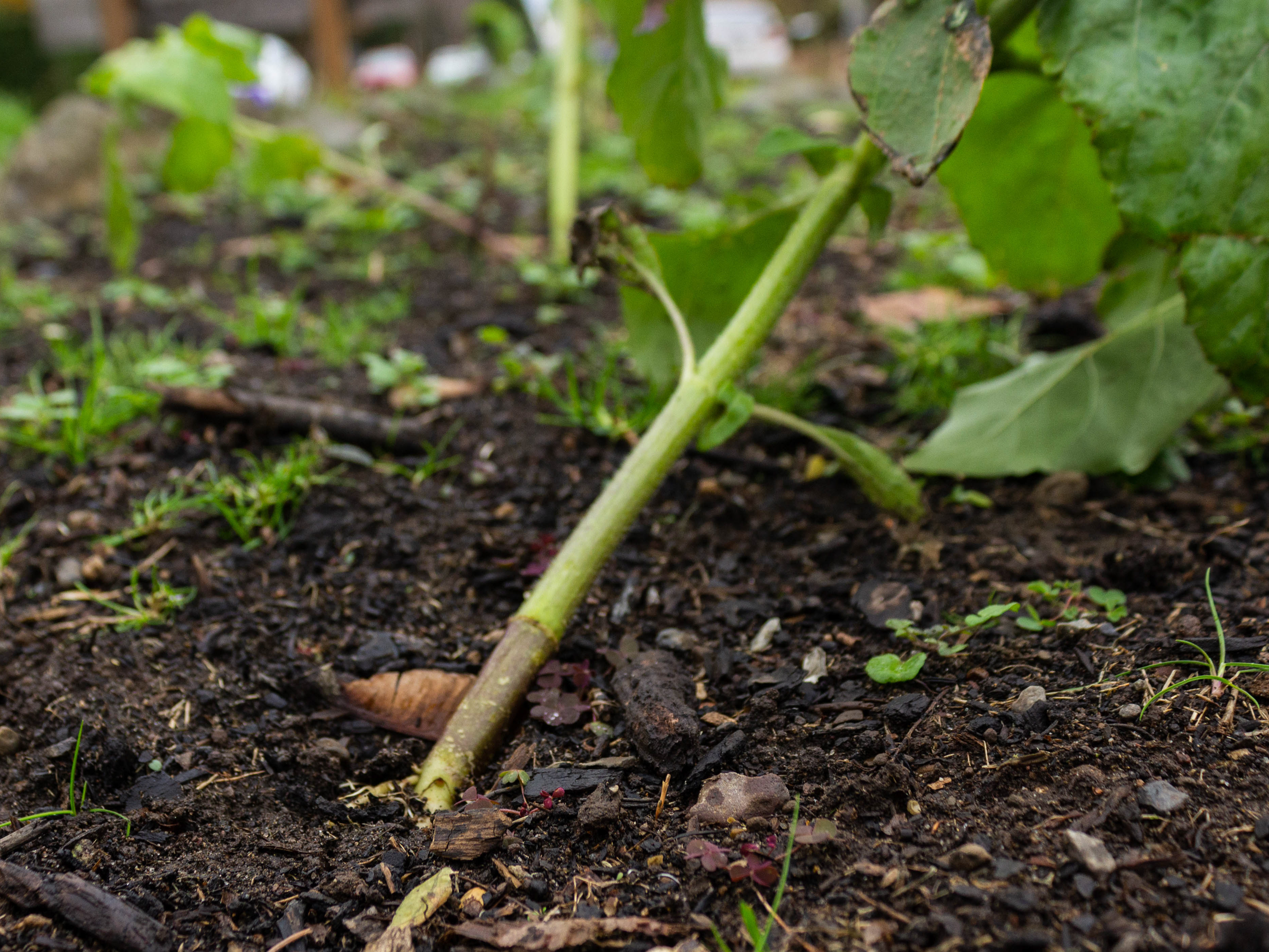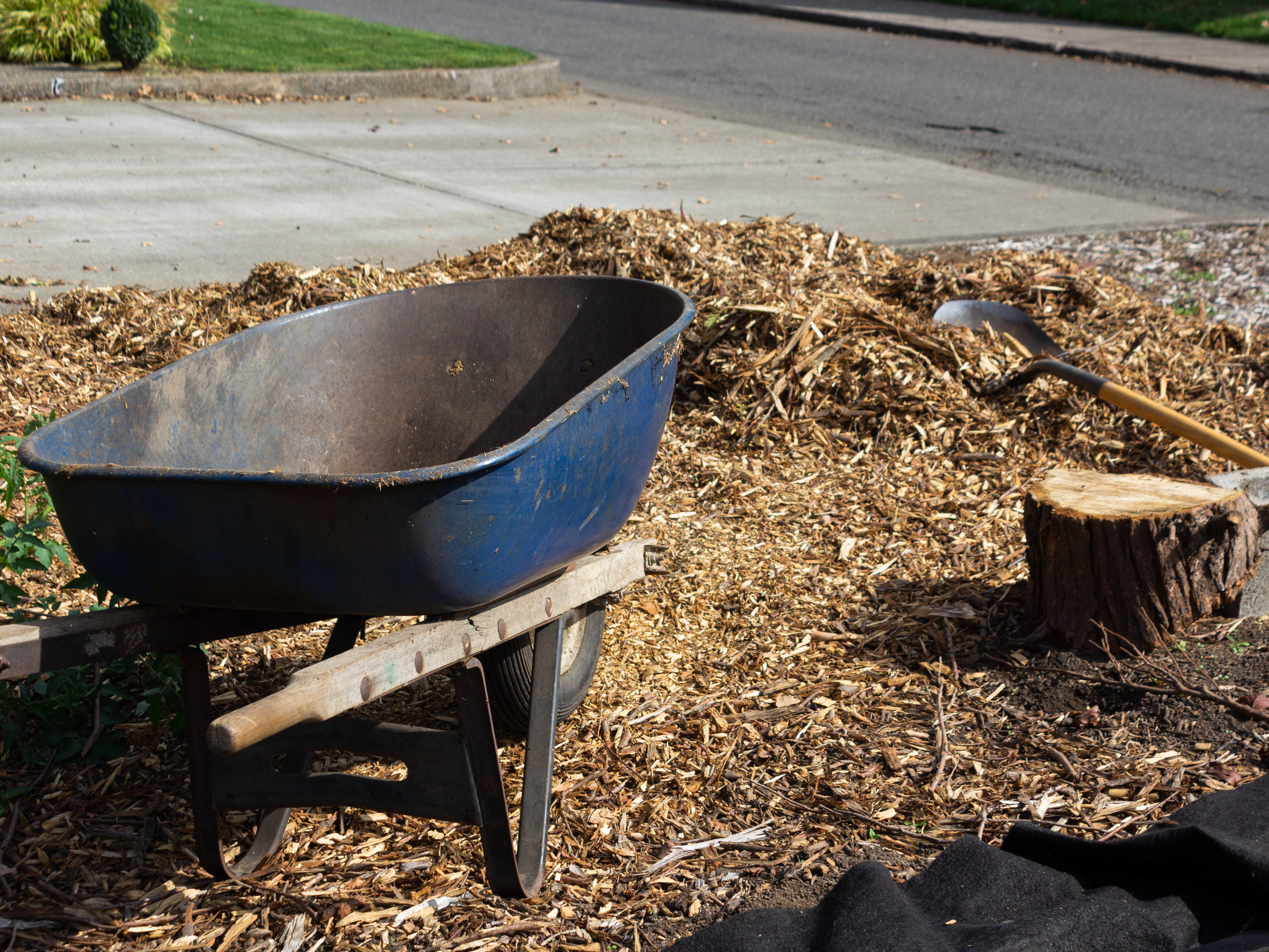Today I was in the garden with Josie and Alysha. They weeded the sunflower bed while I dealt with the nasturtiums. The four plants in one of our beds had become the home of a pretty serious aphid infestation. I’m not quite sure when it started, but it was pretty widespread, with huge clusters of the bugs hiding under leaves where they’re pretty protected from sun, rain, and predators. The treatments that I found online recommended using insecticides, spraying down the leaves with water several time a day, or cutting back the parts of the plant that have the bugs on them. Buying and using insecticides was out of the questions and power-washing the leaves might have worked but would have been very time consuming. Thus, I resorted to cutting the infested parts of the plant off.
But soon I saw that the infestation was even more extensive than I thought with a majority of the leaves having at least a few aphids on them. Also, most of the aphids were located around the center stem of the plants so just snipping off extraneous branches and leaves wouldn’t make the most effective impact. So in the end, I ended up pulling the plants out of the ground entirely. It saved me some time and hopefully by getting rid of all of it, when we put stuff back in that bed, the aphids don’t reappear.
Before I chopped up the nasturtium plants for compost, I snipped off a few small stems with leaf nodes to try and propagate them in small containers of soil. Hopefully if they do okay and take root, we can put them back in the bed again. But for now, that part of the bed is covered with mulch for some protection and insulation against the elements.
The last thing we did was give the garden a good watering. While the days have been consistently overcast, I don’t think there has been any actual rain for a few days. After I thinned the beets last time, we didn’t water the bed, which was an unfortunate oversight as most of the sprouts were looking pretty wilted when we showed up today. Hopefully with the generous watering we gave them today, they bounce back.
Even though we were in the garden only a couple days ago, today I left the garden feeling like there was still so much to get done. I think a good amount of that feeling is due to the fact that we’re in this transition period between seasons – the summer plants are at the end of their lives while it’s time to get others in the ground if we want to be growing in the fall and winter. The summer squash and cherry tomatoes are definitely on their way out now and we’ll have to make a plan to take them out and compost them and then figure out what to do with the empty bed. Do we let the soil rest and let it sit empty for the winter? Do we just leave it be once we pull the plants out or should we amend the bed and then cover it with a tarp from Physical Plant so that it’s ready when we come back in the spring? Or do we put it to use and plant a cover crop? There are definitely plenty of options.
On the other hand, there’s still nothing in yet in the lettuce/spinach bed besides weeds. I think the seeds got planted a little bit too deeply in the soil so that the sprouts weren’t able to break through to the surface where the sunlight is. If nothing does show up in that bed, should we try again with the same vegetables or leave it be and wait for spring?
As for things that are still growing in the garden, there’s a lot of things that need attention. The sunflowers look great now, but our grape plant has gotten pretty neglected while we’ve been focusing on the vegetable beds. In order to make room for a trellis or grapevine, we really need to cut the bush way back. But unfortunately with only one pair of garden shears, this project becomes a one-person task. Something for another Saturday sometime soon.
There are several massive tomato plants that have taken over the compost where we throw our weeds and other various plant clippings. The compost pile itself is its own beast that needs to be addressed soon, but those plants in particular, while they have produced some gorgeous tomatoes that we’ve used to make bruschetta and pasta dishes, the plants themselves have gotten pretty out of control, sprawling out so it makes picking the ripe tomatoes unnecessarily precarious. Plus, they keep growing and still have plenty of green fruit.
And as always there are general maintenance things to do like weeding and tending to the paths by putting down more woodchips to keep the garden looking presentable. There’s no way to be bored in a garden, no shortage of things to keep you busy, that’s for sure. When next Saturday comes around, hopefully at least one of these things get checked off the list.
